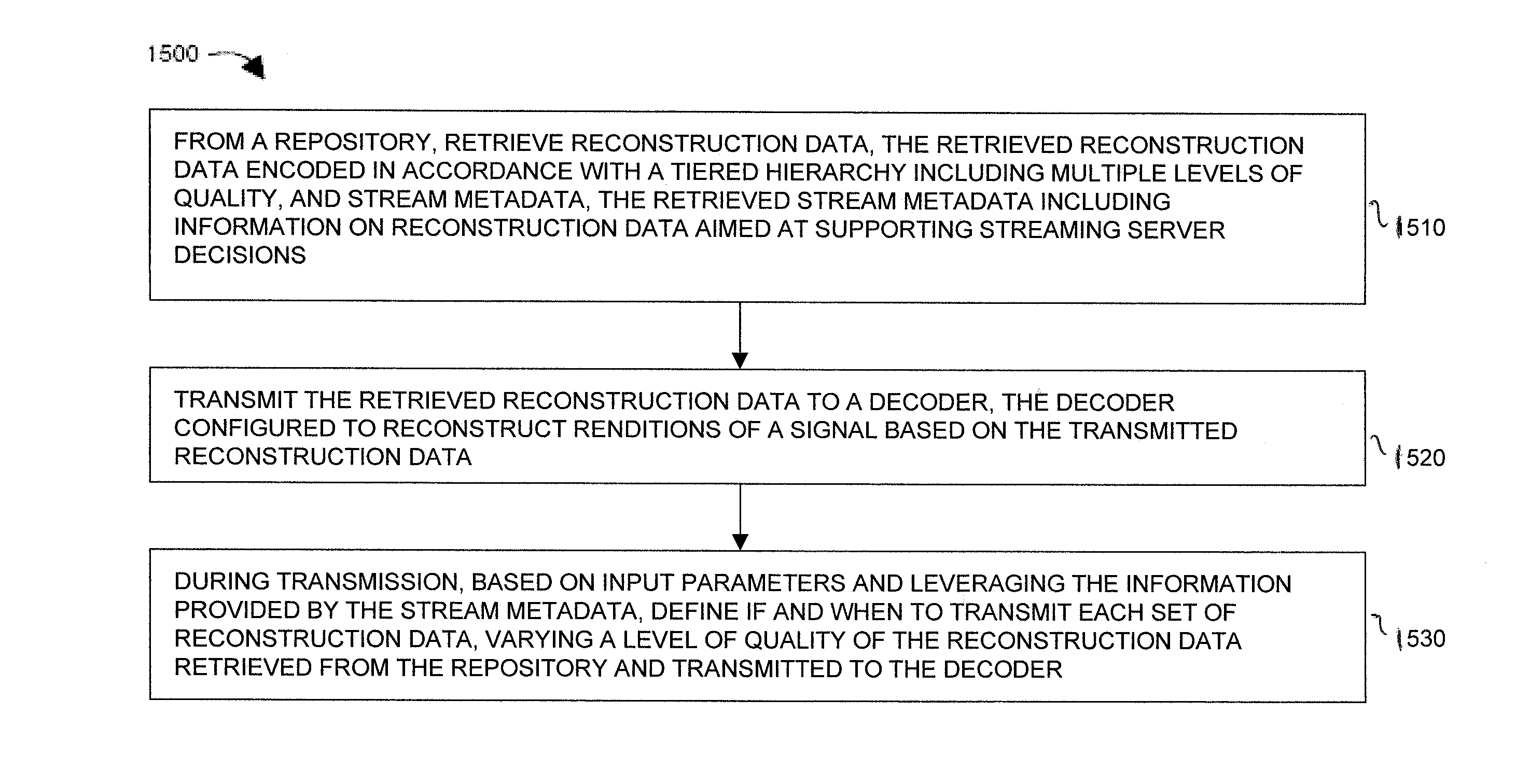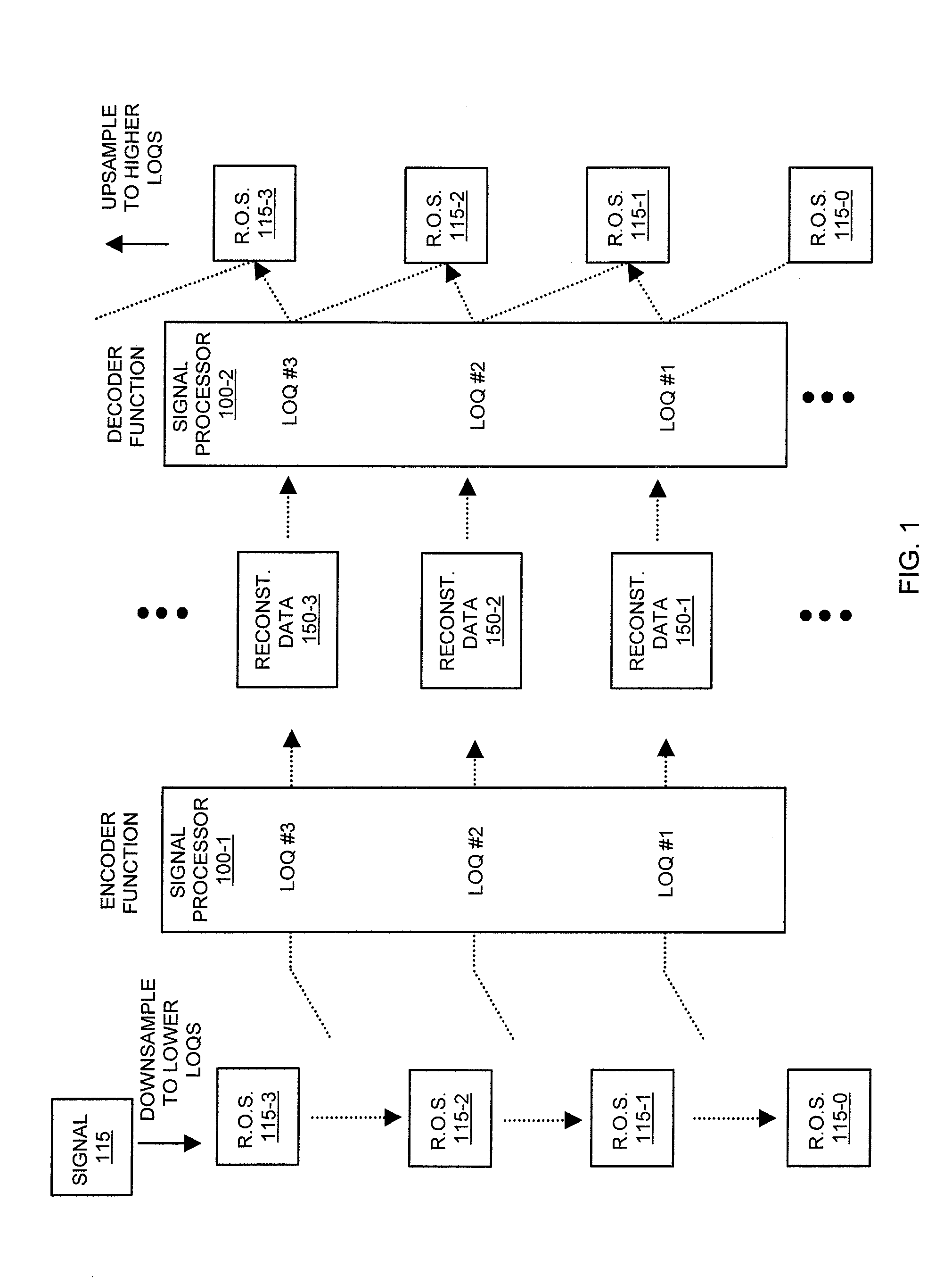Transmission of reconstruction data in a tiered signal quality hierarchy
a signal quality hierarchy and reconstruction data technology, applied in the field of transmission, can solve the problems of insufficient feature support, insufficient bandwidth available for effective video streaming, and insufficient main algorithms and formats, and achieve the effect of improving reconstruction and improving quality
- Summary
- Abstract
- Description
- Claims
- Application Information
AI Technical Summary
Benefits of technology
Problems solved by technology
Method used
Image
Examples
Embodiment Construction
[0071]FIG. 1 is an example diagram illustrating generation of reconstruction data according to embodiments herein.
[0072]As shown, a signal processor 100-1 (encoder) downsamples signal 115 into different renditions at lower levels of quality in a hierarchy. In general, downsampling the signal 115 can include producing a rendition of the signal at each of different levels of quality and generating reconstruction data specifying how to convert a given rendition of the signal at a first level of quality into a rendition of the signal at a next higher level of quality in the hierarchy.
[0073]Signal processor 100-2 utilizes the reconstruction data 150 to reconstruct renditions of the signal at different levels of quality. The signal processor 100-2 can receive the reconstruction data 150 from any suitable source (e.g., communication link, storage device, etc.).
[0074]Note that values associated with the rendition of signal 115 and corresponding rendition of signal at lower levels of quality...
PUM
 Login to View More
Login to View More Abstract
Description
Claims
Application Information
 Login to View More
Login to View More - R&D
- Intellectual Property
- Life Sciences
- Materials
- Tech Scout
- Unparalleled Data Quality
- Higher Quality Content
- 60% Fewer Hallucinations
Browse by: Latest US Patents, China's latest patents, Technical Efficacy Thesaurus, Application Domain, Technology Topic, Popular Technical Reports.
© 2025 PatSnap. All rights reserved.Legal|Privacy policy|Modern Slavery Act Transparency Statement|Sitemap|About US| Contact US: help@patsnap.com



